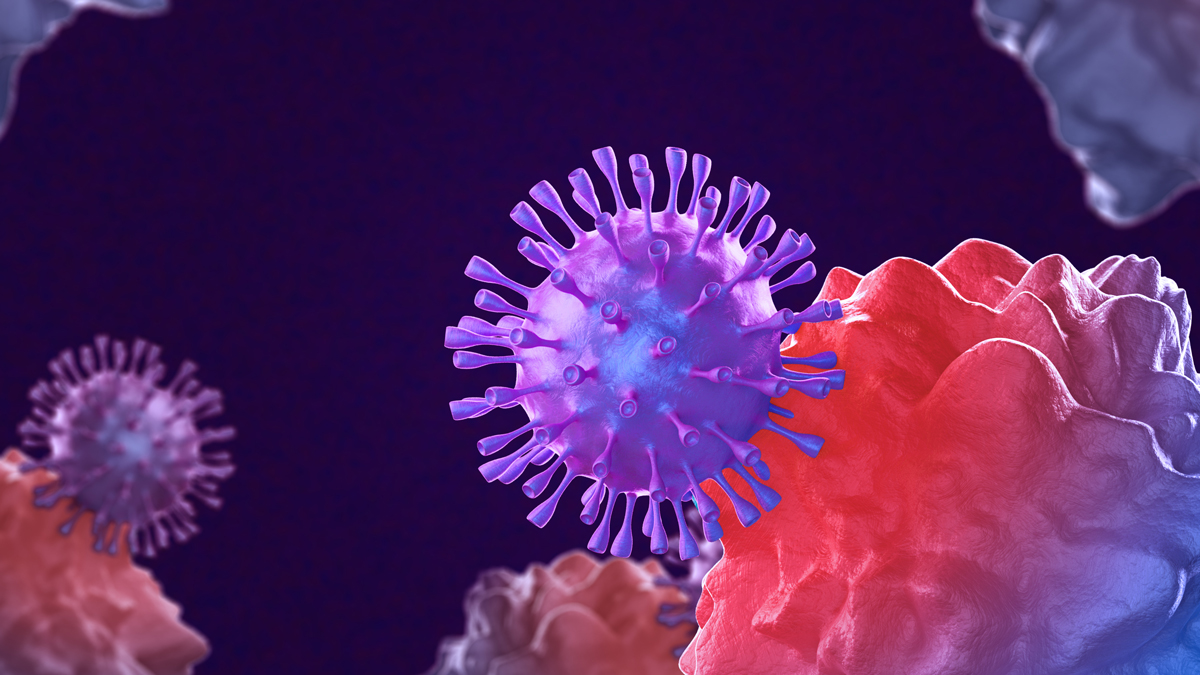New HIV variant highlights the importance of monitoring virus mutations

Researchers discovered a highly virulent variant of HIV in the Netherlands that genetic sequence analysis suggests has been circulating since the 1990s.
Approximately 38 million people currently live with HIV (human immunodeficiency virus) worldwide, and, in 2020 alone, 680,000 people died of AIDS-related illnesses.
Earlier this month, the ongoing BEEHIVE (Bridging the Epidemiology and Evolution of HIV in Europe) project reported their detection of the new variant of subtype-B HIV-1, the most common type of HIV, that appears to be even more damaging to a person's health.
Identified as the "VB variant," the virus has proved to be highly virulent and to speed up the progression of a patient developing AIDS faster.
BEEHIVE follows individuals enrolled in eight cohorts across Europe and Uganda to understand better the molecular basis of HIV strains and which mutations in HIV's genetic sequence are associated with a higher viral load and more rapid progression to AIDS.
Led by researchers from the University of Oxford's Big Data Institute, the study underscores the significance of analysing viruses continually over time.
The VB variant
HIV first emerged in 1920 in the Democratic Republic of Congo, and, like other viruses, researchers monitored its evolution and anticipated it would mutate.
Keeping track of a virus' virulence is an essential step in understanding how severely a pathogen invades and multiplies within its host and, therefore, how damaging the infection can be over time.
By 1960 subtypes were identified, taking different routes through global spread, establishing a solid association with geography, ethnicity, and method of transmission.
HIV-1 virulence is commonly measured by viral loads (the level of viral particles in the blood) and CD4 counts (the concentration of CD4+ cells in the blood that show immune system damage caused by HIV).
It's expected that viral load and CD4 cell decline are heritable properties – that is, there's a correlation between an individual's viral load levels and CD4 decline rates and those of whomever the host infects.
That expectation was substantiated with evidence of the VB variant. Both hosts and those infected had comparable viral load and CD4 counts.
Unfortunately, individuals with the VB variant had viral loads between 3.5 and 5.5 times higher than those with non-VB variants, making the host more likely to transmit the virus to others.
Additionally, the rate of CD4 cell decline occurred twice as fast in individuals with the VB variant. Therefore, the risk of developing AIDS more rapidly was higher.
Effects of the variant
In the BEEHIVE study, 17 individuals were found to have the distinct subtype-B viral variant – 15 participants in the Netherlands, one from Switzerland, and one from Belgium.
Researchers evaluated data from 6,706 additional Dutch individuals with subtype-B infections to replicate the findings and analyse the variant further. They found that 92 of those people were infected with the VB variant.
Of the 109 individuals found to have the new variant, each had an increase in viral load and exhibited CD4 cell decline twice as fast as individuals with other subtype-B strains.
Without treatment, advanced HIV was expected to be reached on average within nine months after diagnosis of the VB variant for individuals in their thirties compared to 36 months for individuals with a non-VB variant infection.
“Advanced HIV is reached even more quickly in older age groups, and there is considerable variation between individuals around these expected values,” the study notes.
“Many individuals could therefore progress to advanced HIV by the time they are diagnosed, with a poorer prognosis expected thereafter despite treatment.”
The VB variant was also associated with a doubling in the rate of CD4 cell decline.
Encouragingly, after beginning treatment, CD4 counts, immune system recovery, and survival rates were similar for individuals with the VB variant as those with a non-VB variant.
“Individuals had similar CD4 counts and mortality after treatment despite a faster CD4 cell decline before treatment."
Researchers stressed the importance of individuals being diagnosed early and starting treatment as soon as possible due to the variant causing such a devastating effect on the immune system so quickly.
Detecting the variant
Though the number of individuals detected to have this specific mutation is relatively low compared to the number of HIV patients worldwide, the results of this study emphasise the importance of monitoring virus evolution.
Monitoring allows researchers to understand previous evolutionary events and predict how viruses may change in the future, allowing for a better understanding of virulence evolution, drug resistance, and vaccine efficacy.
BEEHIVE's researchers opted to use whole-genome sequencing (WGS) to evaluate the virus' transformations over time.
WGS is a laboratory procedure that analyses the complete DNA makeup or sequence of a cell at one time, providing a comprehensive characterisation of a genome and allowing researchers to understand variations between organisms better.
Individuals within the eight cohorts across Europe and Uganda involved in BEEHIVE were "selected because they have well-characterised dates of infection and samples available from early infection, for whom whole viral genomes were sequenced."
Researchers used whole-genome data, providing the 17 whole genomes available for the variant.
Ultimately, the VB variant genotype was marked by many mutations spread throughout the genome, meaning that a single genetic cause for the increased virulence cannot be determined.
"Genetic sequence analysis suggests that this variant arose in the 1990s from de novo mutation, not recombination, with increased transmissibility and an unfamiliar molecular mechanism of virulence," the study notes.
De novo mutations are genetic alterations that appear for the first time due to a variant or mutation – they are the most extreme form of rare genetic variation.
WGS is largely used in research studies as it allows for the analysis of complete genomes of various bacterial pathogens. Thanks to BEEHIVE and the use of WGS, the health sector is now aware of this new de novo mutation – the VB variant.
About the author
Jessica Hagen is a freelance life sciences and health writer and project manager who has worked with VR health companies, fiction/nonfiction authors, nonprofit and for-profit organisations, and government entities.











